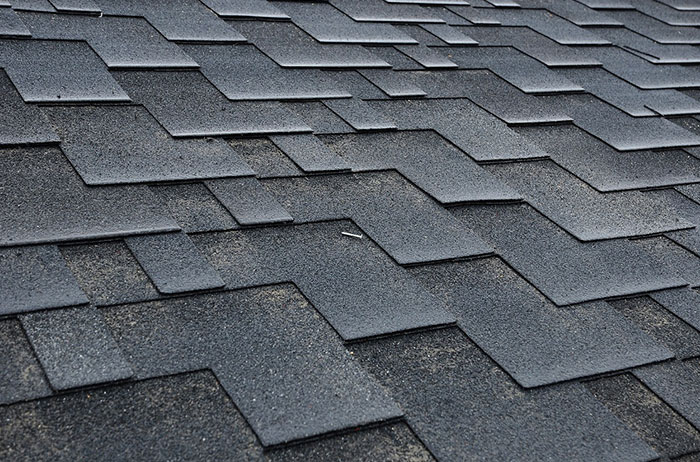Discovering a leak in your brand-new roof can be a real head-scratcher. After all, you invested time and money to ensure your home stays cozy and dry.
But, as crazy as it may sound, it’s not unheard of. Leaks can happen even to the newest of roofs. So, what’s the next step if you find yourself in this situation?
In this article, we’ll walk you through the simple yet crucial steps to tackle the issue and keep your home safe and snug. Let’s dive in and discover what you must do to keep your home in tip-top shape!
Things to do When Your New Roof Starts Leaking
-
Move valuable items away from the affected area to keep them safe from water damage
When your brand-new roof springs a leak, it can spell trouble for your attic, ceilings, and the belongings within your home. You must act swiftly if you want to safeguard your cherished possessions.
Begin by relocating valuable items, furniture, and electronics from the affected area to shield them from potential water damage. If your leak threatens items like your bed, clothing, or furnishings, you should clear the zone.
Use buckets or tarps to shield objects you can’t move. Ensure to cover objects like carpets and furniture to prevent unsightly water damage and stains.
-
Identify the source of the leak
You need to identify the source of a roof leak so you can effectively tackle the issue. Begin by checking your attic for signs of leakage, like water stains, damp insulation, or mold growth.
Follow the water’s path to pinpoint where it’s infiltrating from. Safely inspect the roof’s exterior with binoculars for visible damage, such as missing shingles, cracked flashing, or damaged vents.
Just remember that climbing onto the roof yourself is unsafe, especially if it’s new, as you might cause further damage. Instead, consider reaching out to professionals like Shoreline Roofing. With our expertise, you can be sure you will get a safe and thorough assessment.
-
Contain the leaking roof as much as possible
When you notice that your roof is leaking, you should try to contain the leaking roof as much as possible. Grab buckets, garbage cans, towels, or any available items to capture the water. Ensure to minimize its impact and potential damage.
Leaking water from the roof can wreak havoc on your floors, so ensure you have multiple containers on standby to catch the water and empty them regularly. This helps to reduce the risk of overflow.
By containing the leak promptly, you prevent the costly escalation of water damage within your home.
Avoid any attempts to fix the roof yourself, as it could void warranties and leave you with costly repairs. Act swiftly, gather containers, and protect your home from further harm.
-
Puncture the ceiling if you notice that there’s a bulge
If you spot a big bulge on your ceiling when your new roof leaks, you must take action promptly. This bulge indicates a gathering of water that can lead to more extensive damage if left unaddressed.
It may sound destructive, but the best course of action at that point would be to drill a small hole at the lowest point of the bulge. You can use a screwdriver to do this.
While you do it, ensure that you have positioned a bucket underneath to capture the escaping water. Depending on the size of the leak, you might need multiple punctures, but you should try to limit the number of punctures you make to the ceiling to prevent excess damage.
The goal is for you to prevent the water from spreading further within your ceiling or potentially causing a collapse. It’s a counterintuitive but effective step in reducing the damage caused by a leaking roof.
-
Tarp the roof and use fasteners to nail it down
When it’s impossible to immediately repair your leaking roof, consider tarping it. Cover the problem area with a sturdy tarp at least six millimeters thick.
Ensure it extends at least four feet across the affected region and up to the peak. If the peak is out of reach, tuck the tarp beneath the shingles and secure it with roofing nails.
Note that you should only do this if you are sure that you can safely reach the affected part of your roof without encountering issues.
If you can safely carry out this procedure, it will provide comprehensive protection around the perimeter of your roof and effectively shield the area from further water intrusion.
However, if accessing the leak safely is a concern, it’s advisable to enlist the services of a professional roofer.
-
Document the leak and damage
When you encounter a leak in your new roof, you should document the damage thoroughly. This documentation serves vital purposes, including supporting insurance claims or warranty requests.
To accomplish this, take clear photos or videos of the affected areas inside and outside your home. Ensure you capture any visible evidence of water entry, such as water stains, damp spots, or mold growth.
This documentation highlights the severity of the roof damage and showcases any other items that may have been compromised, such as electronics, furniture, bedding, or kitchen appliances.
It’s crucial to ensure that your insurance or warranty covers the necessary repairs and replacements.
Finally, Call a Professional Roofing Company
Calling a professional roofing company is the smart move when dealing with a leaking roof. While DIY fixes might seem tempting, some hidden sources of leaks can lead to more extensive damage over time.
The longer you delay, the worse the issue can become, especially with impending rain or snow. Professional roofers possess the expertise to repair the damage and assess potential problem areas on your roof.
Don’t hesitate; to contact a roofing contractor like Shoreline Roofing to ensure a proper fix for your new roof.



